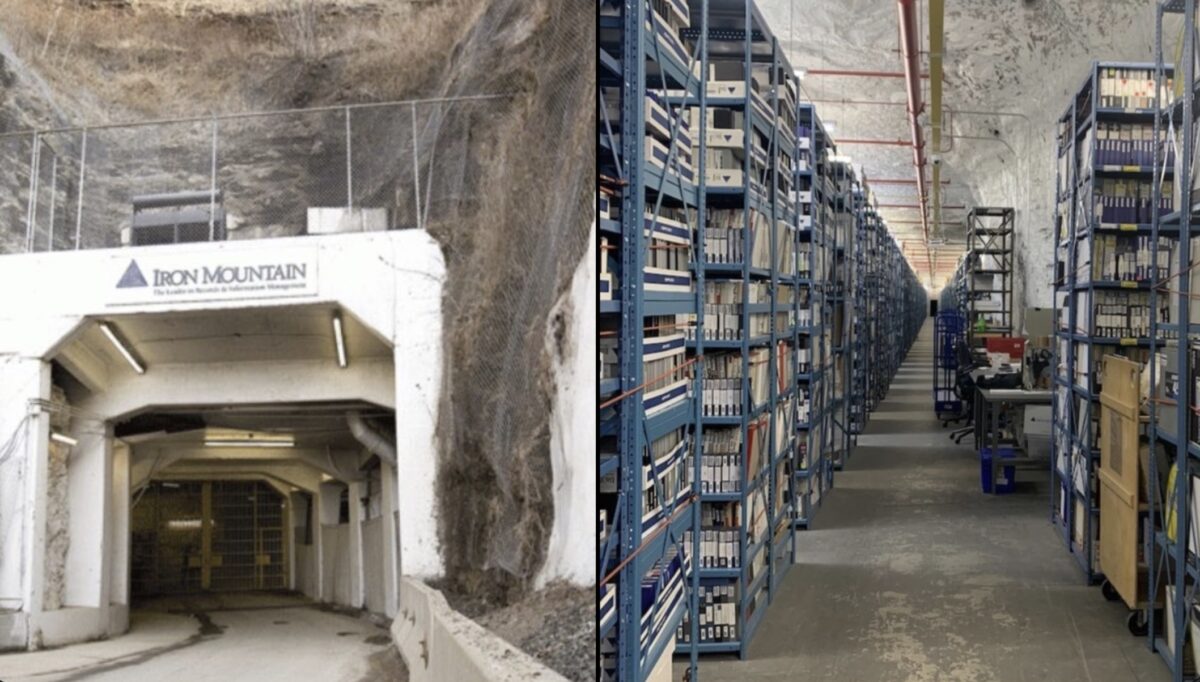The ‘Limestone Mine’ That Elon Musk Said Manually Processes Federal Retirement Paperwork Is Actually Real

Screenshot via X.
Tuesday afternoon, President Donald Trump and Elon Musk held a bizarre press conference in the Oval Office Tuesday afternoon, and during a long rambling section when Musk was talking about his work with DOGE, he mentioned “a limestone mine” where “we store all the retirement paperwork.” That mine is actually a real thing that does in fact function pretty much like Musk described it.
Musk does have a well-established track record of saying, sharing, and amplifying things that are misinformation, conspiracies, or lies, but he was on the mark with these comments at Tuesday’s presser when he was discussing reforms he thought should be made:
So, you know, one of things is like which we all try to sort of rightsize the federal bureaucracy to just make sure that this obviously there need to be a lot of people working for the federal government, but not as many as currently.
So we’re saying, well, okay, well, it’s if people can retire, you know, with full benefits, benefits, everything, that that would be good. They can retire, get their retirement payments, everything. And then we’re told this is actually, I think, a great anecdote because we’re told that the most number of people that could retire possibly in a month is 10,000. We’re like, well, wait, why is that?
Well, because all that all the retirement paperwork is manual on paper. It’s manually calculated. They’re written down on a piece of paper. Then it goes down a mine and like, what do you mean a mine? Like, yeah, there’s a limestone mine. We store all the retirement paperwork. And you look at a picture, we will post some pictures afterwards.
And this is this mine looks like something out of the 50s because it was started in 1955. So it looks like it’s like a time warp. And then the speed the limiting factor is the speed at which the mine shaft elevator can move determines how many people can retire from the federal government. And the elevator breaks down sometimes and then nobody can retire.
In 2014, investigative journalist David Fahrenthold reported for The Washington Post about this facility, which he dubbed a “Sinkhole of Bureaucracy.”
Fahrenthold’s article described the limestone mine in Boyers, Pennsylvania as “one of the weirdest workplaces in the U.S. government — both for where it is and for what it does.” The town about 60 miles north of Pittsburgh has hosted this unusual government facility since the mid-twentieth century, and much of the technology used in the office seems to date from that era.
At the time Fahrenthold was reporting on this over a decade ago, there were 600 employees of the Office of Personnel Management that processed the retirement paperwork for the entire federal workforce in this facility that boasts “eight massive file caverns.”
The history of this underground office dates back to the late 1950s, when the federal government was looking for additional storage space and was alerted to this abandoned mine in Boyers, which had been bought by a private company and essentially turned into “an enormous safe-deposit box: safe from the weather and the Soviets, kept naturally cool as a cave.” That naturally preservative climate and secure location has continued to be a benefit to this day. The complex is owned by document company Iron Mountain, which also leases space in caverns adjacent to the OPM offices to be used for preserving old Hollywood movie reels and photographic archives.
The issue isn’t necessarily the mine itself, but the fact that core steps in the way retirement papers are processed are still done manually, requiring paper printouts, actual signatures, and tens of thousands of file cabinets stuffed with manila folders.
James W. Morrison Jr., who oversaw this office under President Ronald Reagan in the 1980s, was shocked when Fahrenthold told him that the system was still managed by shuffling dead trees around. Another decade in and Morrison might have a stronger reaction than the “Wow” he gave the Post in 2014.
Fahrenthold’s article describes in painstaking detail the multi-step procedures for intake, processing, and approval of retirement paperwork, which repeatedly uses real paper that has to be internally moved by the employees taking long walks through mostly empty caverns hundreds of feet below ground, then typing data into computers and printing out documents again. This leaves the federal retirement system only able to “run at the speed of human fingers and feet,” making federal retirees wait months before they can receive their full benefits.
Past attempts to digitize the office in the 1980s and 1990s burned through tens of millions of dollars. Another attempt in 2008 took over a hundred million to implement but then was junked in a few months after it failed on all but five of the 61 functions the software was supposed to handle.
The account for DOGE tweeted a photo of the mine facility Tuesday afternoon after the presser.
Read Fahrenthold’s full report here.




